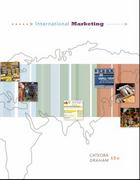1. (25 points, 3.5 each part) A firm is led by a CEO who lies, manipulates, and intim- idates his employees to advance his own personal agenda. The employee's interests are represented by an "oversight council" with two members, i = 1,2. The council members can exert effort to push back against the CEO's toxic behavior in two dif- ferent ways. First, the council members can exert effort p; 2 0 to publicly resist the CEO's behavior, for example by denouncing his behavior in meetings, writing articles in the press, and voting against his proposed policies. Second, the council members can invest r; 2 0 resist the CEO privately, for example, by having conversations with their colleagues outside of work, reporting violations to legal or ethical authorities, and secretly supporting efforts to remove the CEO from his position. A council member's benefit depends on his or her own total level of resistance to the CEO, pi + ri. This benefit is increasing, but at a decreasing rate, so that the benefit to council member i from resistance p; + r; is equal to B(r;, p;) = vri + Pi. Though public and private retaliation contribute in the same way to a council member's benefits, the costs associated with each are different. In particular, when a council member invests p; publicly, this is observed by the CEO, who then retaliates against the council member, imposing cost c(p;) = p;. When the council members privately resist at levels (1, r2), the CEO observes the total level of private resistance (r, + 72), but does not observe the individuals' levels separately. In this case, the CEO's total retaliation is equal to the total level of resistance, but the retaliation is split equally against the two council members, which imposes a cost k(r, r,) = $412 on each of the council members. Based on the preceding description, consider a game between the council members in which they choose (pa, ri) simultaneously, with the following payoffs, UI (P1, 1, P2, 72) = VPI+ 1 - P1 F1 + 2 2 U2(P1, 71, P2, 72) = VP2 + 12 - P2 21(1,72) = 2 12 (71, 12) = V 12 2 Find council member I's best response to level r2. Hint: the derivative of Vr is a/7) (c) Find the Nash equilibrium of the game. Hint: each player has a dominant strategy). (d) What is each council member's payoff in this equilibrium?Consider the same game, except that the council members make an unbreakable promise that all their resistance must be done publicly. That is, the council mem- bers impose a rule that 1 = 12 = 0, while allowing any p; 2 0. In this case, the payoff functions are uI(P1, p2) = VPI - PI uz(P1, p2) = VP2 - P2 (e) Find each council member's best response and the Nash equilibrium of the game. (Hint: derivative of VT is :.) (f) Does such an unbreakable promise benefit the council members? Explain your answer in a sentence or two. (g) Does this remind you of a simple strategic environment? Which one? Explain your answer in a sentence or two









